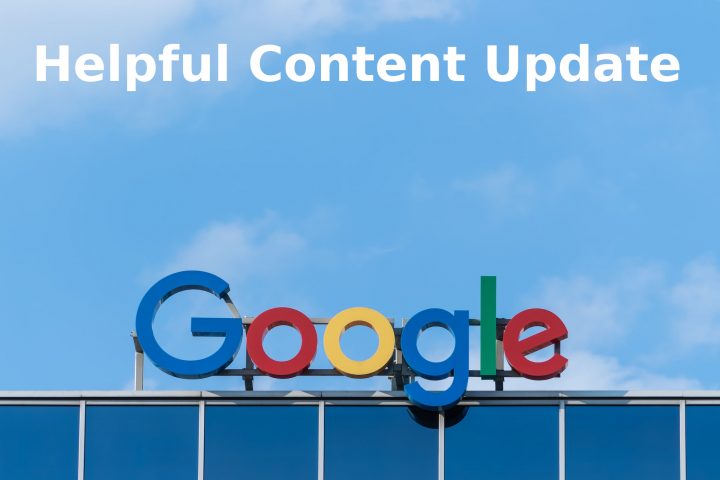One of the first answers I give when asked about optimising content for search is to kick the rules and “laws” of SEO to the side completely. It’s admittedly not a popular answer, or one that converts very many skyscraper zealots, but it’s always been the best strategy for high-quality content writing for the best SEO results. Google’s helpful content update is the latest update to search that codifies this rule even further into SEO strategy planning.

Helpful content is one of the very few search algorithms that looks at a site as a whole entity rather than examining just its individual content pages. Far from being a revolution in search — as many sources are claiming — it’s a simple, straightforward, and obvious evolution of matching informative content to searcher intent.
The goals of Google’s latest update are self-evidently aimed at filtering out pages attempting to skim search traffic with low-cost, low-quality content that hits the right keywords. An idea first released over a decade ago as Google Panda, helpful content evolves many of the same tools and techniques with ever more powerful computing capabilities.
For the vast majority of technical content writers and publishers, this update is a positive step towards engaging more readers, better rankings, and the opportunity to publish vastly improved content on their pages.
For everyone else, it might be time to change tac on delivering technical content directly to the algorithm rather than the audience.
How to Avoid SEO (and still have it deliver)
Today, SEO is focused to the point of obsession over ticking the right boxes and metrics to satisfy an algorithm that remains hidden behind a curtain and consistently changing. There is another way to do precisely the same thing and protect against the updates and changes inevitably coming in the near future. You can instead choose to case after the same targets the algorithm is aiming for.

The ‘SEO rules’ that come from Google are far from arbitrary or lightly thought out. Search algorithms are aiming for a target that meets the combined attention, intent, and satisfaction of users in a way that ensures the first link they click on is the most relevant and informative information they need. Your content should be aiming for those very same goals.
At the very least, meeting the demands of the user has always been as equally valid as designing and producing content that meets the needs of a black box algorithm. Yet, user-targetted content comes with a host of other side benefits too.
- Content that is helpful, attention-grabbing, insightful, and informative is also convincing to future customers and clients. I’ve yet to meet a project manager or application designer that’s impressed by how search-optimised a vendor’s articles are or how many keywords they can stuff into a guide. Knowing your stuff is a valid conversion strategy.
- Future upgrades to the algorithm will always lean towards meeting the user with relevant content. Today, dozens of major publishers are investing their time in hacking and slashing at unhelpful content to meet Google’s helpful content update. Pages already tailored to engage users are being automatically boosted by the most recent changes.
- Shifting trends and cyclic fashions in tech will play to your advantage with meaningful content. As IoT, AI, and virtual reality play out in news stories and pop culture references, meaningful content will be there waiting for searchers with authority and insight already baked in.
Drawbacks of the Google Helpful Content Update
Of course, to execute this content strategy well you genuinely have to know your stuff to some degree or another before you begin writing about it. However, that’s always been the case with worthwhile writing. Travelogues are written by people who travel, legal content is written by those who know the law well, and technical content should be written by those who know tech to the same degree.
Recent years of content being written for content’s sake is the aberration rather than the norm. The latest Google helpful content update is a step closer to genuinely helpful, interesting, and informative writing filling the web.

SEO tools should be used wisely rather than exclusively to build great content. Search tools such as ahrefs and Moz should tell you where your users are and what they need rather than how to engage them. Computers can’t write well yet and they shouldn’t be wagering your search rankings to try by choosing your areas of interest, headings, or content.
Used well, these tools and others like them will tell you a huge amount about the technologies, languages, and trends that users are looking for today. They can tell you what’s worth targetting and what’s worth leaving to the side. They tell you what users want to learn and the format they want to learn it in.
It’s up to you to combine these insights with those unique to your firm, content, and pages. The only place anyone can get the perspective, expertise, and viewpoints of your company is on your site. Much of the most popular technical content around can be found several times over in various generic forms— it’s only the content that’s unique to you that provides something to your audience that can’t be uncovered anywhere else.
Stories, viewpoints, people, and opinions are a currency on the web uniquely undervalued today and there’s never been a better time to cash them in.
If Google’s latest update can at least slow down the blight of reviews, ‘break-downs,’ and summaries from writers who have self-evidently never seen the product before, then it will be a huge gift to the web. Whether this latest update truly can filter the good from the bad remains to be seen.
We might be entering a new age of the web where unique, genuine, and interesting content is rewarded or we might have to wait for a future update to get us there.

